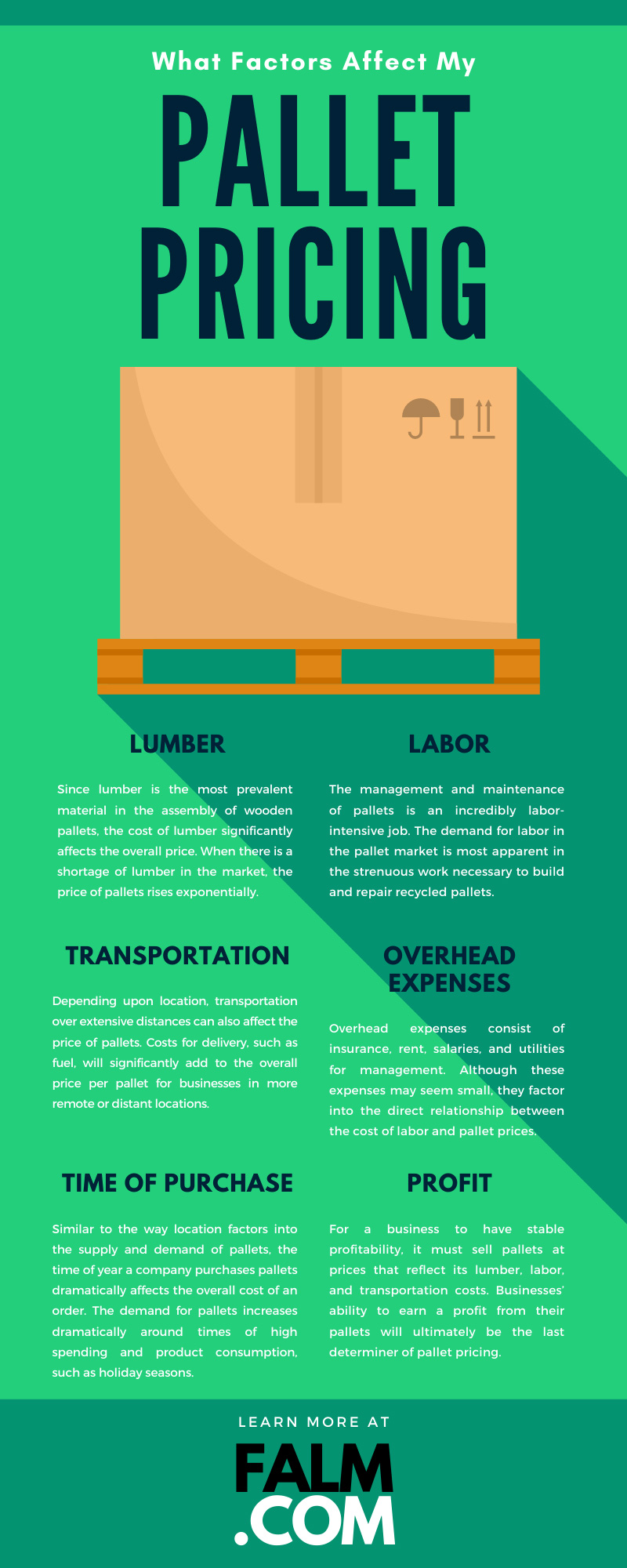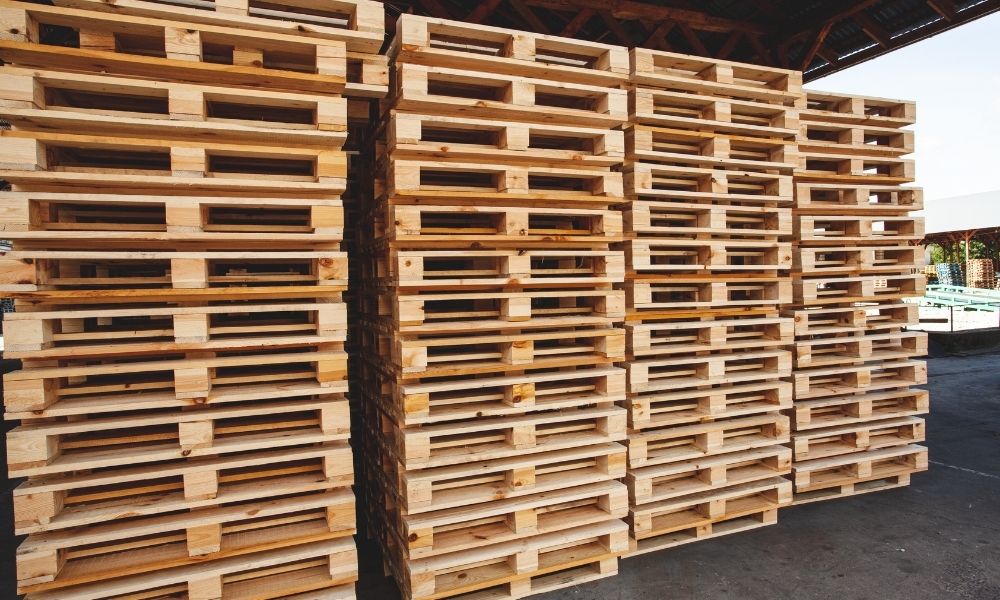The price of pallets constantly changes with the supply and demand of the market. However, pallet costs mainly depend on major factors such as lumber, labor, transportation, overhead expenses, nails, and profit. In this blog, we’ll discuss each of these factors that affect pallet pricing to better understand what determines the value of the average pallet order.
Lumber
Wooden pallets are a commodity made up of other commodities. This means that the price of pallets is the direct result of the materials manufacturers use to construct them. Since lumber is the most prevalent material in the assembly of wooden pallets, the cost of lumber significantly affects the overall price. When there is a shortage of lumber in the market, the price of pallets rises exponentially.
Shortages in lumber can derive from a variety of environmental factors. Wet weather conditions also prevent loggers from being able to transfer their heavy equipment into waterlogged forests, which means they’re unable to harvest lumber. Industries with similar demands for lumber, such as residential construction and other industrial users like crane mats and railroad ties, also pay more for lumber, which drives up overall lumber demand and price.
The size of different pallets also requires different quantities of lumber, which directly affects the price. The average pallet is 48×40 inches in dimensions. Pallets of this size are known as GMA pallets. However, customers who require different dimensions, sizes, and customizations will automatically pay more for their lumber.
The type of pallet also affects how much lumber is necessary and will affect overall pallet pricing. Since certain types of pallets require a bulkier design to provide more support for heavier products, the increase in materials will drive up the overall price.
For example, block pallets are likely to be more expensive than stringer pallets because they require more materials and have a more complicated design. The different types of pallet designs include block pallets, stringer pallets, solid deck pallets, double face pallets, and double wing pallets. Each of these pallet types has a custom design to transport various types of products and requires different amounts of lumber and materials.
Labor
Another significant factor that affects the price of pallets is labor. The management and maintenance of pallets is an incredibly labor-intensive job. The demand for labor in the pallet market is most apparent in the strenuous work necessary to build and repair recycled pallets.
For example, the largest price for a pallet is an acquisition cost. Businesses pay these acquisition costs to buy salvageable pallets to fix and resell for profit. However, to resell and make a profit from these pallets, intense labor is necessary to repair recycled pallets into usable products.
Businesses can use buy-back programs to sell or buy older recycled pallets. Pallets sold in buy-back programs go through quality assessments for wear and damage and receive a grade. Each grade determines the value for these recycled pallets and affects the price.
Transportation
The transportation of pallets also contributes to overall pricing. While many customers may assume that ordering a bulk number of pallets will yield more discounts to save on transportation costs, this is hardly the case. Instead, the freight economies of scale are no longer applicable once an order meets truckload quantities.
Depending upon location, transportation over extensive distances can also affect the price of pallets. Costs for delivery, such as fuel, will significantly add to the overall price per pallet for businesses in more remote or distant locations.
Overhead Expenses
Overhead expenses are also a factor to consider in your estimates. Overhead expenses consist of insurance, rent, salaries, and utilities for management. Although these expenses may seem small, they factor into the direct relationship between the cost of labor and pallet prices.
Time of Purchase
Similar to the way location factors into the supply and demand of pallets, the time of year a company purchases pallets dramatically affects the overall cost of an order. The demand for pallets increases dramatically around times of high spending and product consumption, such as holiday seasons. To meet the high demand during these months, many manufacturers will increase their pallet orders toward the third or fourth quarter of the year until consumer spending falls back to a stable rate.
Other agricultural and seasonal spikes in demand can also increase prices. For example, annual fishing seasons in the Pacific Northwest raise the demand and price of pallets each year during their highest catching period. These seasonal factors create constant waves of demand that greatly affect the price.
Nails and Materials
Separate costs for materials outside the costs of lumber also play a role in pallet price. Materials used to construct and fasten pallets, such as nails, also fluctuate in price throughout the year, depending on market supply and demand.
Cost changes in these materials will likely lead to an increase in overall pallet price. For example, recent rises in steel demand have raised the cost of nails, which has directly raised the value of the average wooden pallet.
Profit
The last factor that affects the price of pallets is profit. Businesses factor their costs and expenses to determine the value of each pallet they sell. For a business to have stable profitability, it must sell pallets at prices that reflect its lumber, labor, and transportation costs. Businesses’ ability to earn a profit from their pallets will ultimately be the last determiner of pallet pricing.
All these factors, including lumber, labor, transportation, overhead expenses, nails and materials, and profit, together determine a pallet’s price. Here at First Alliance Logistics Management, we pride ourselves on being a leading provider for pallet sourcing to help businesses with their pallet management. Our team of experts is prepped and ready to help you understand pallet industry best practices to assist your business in reducing overall costs. To learn more about how we can assist your pallet needs, browse our website.


